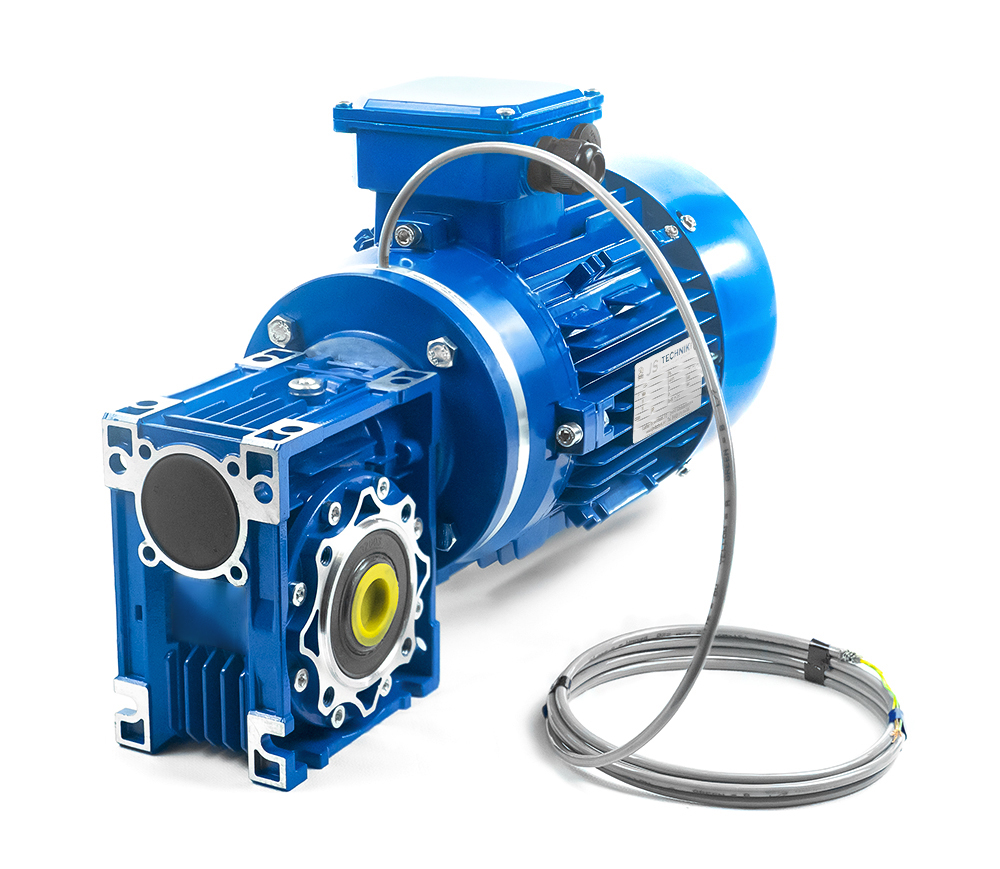Incremental encoder or absolute value encoder
The distinguishing feature of an incremental encoder is that it measures and signals a change in angle. In other words, when an incremental encoder is powered up, it will not report its angular position until it is provided with a reference point from which to make a measurement.
An absolute encoder, on the other hand, reports its position unambiguously within a scale or a range. This means that an absolute encoder, when switched on, reports its position without the need for any reference data. What happens after switching on is therefore an important point of reference for distinguishing between an absolute encoder and an incremental encoder.

Encoder mounted between motor and gearbox
Incremental rotary encoder (Basic)
With the BASIC incremental rotary encoder, high-precision positioning tasks can be carried out easily and inexpensively. Suitable for all controllers that process HTL signals. The Basic rotary encoder is an economical solution for simple positioning tasks with an A90°B output signal and a resolution of between 1 and 64 pulses per revolution.
Incremental encoder (NOVA+)
With the incremental rotary encoder NOVA+, high-precision positioning tasks can be carried out easily, and it is compatible with practically all controls (HTL and TTL). The NOVA+ has exceptional resolution with an A90°B /Ā90°B output signal with up to 2048 pulses per revolution.
Absolute encoder (AST)
The absolute single-turn encoder AST ensures optimal interaction of the individual system components and facilitates the implementation of high-precision positioning tasks. Our customers
often install the encoder in environments where safety and accuracy are critical.



